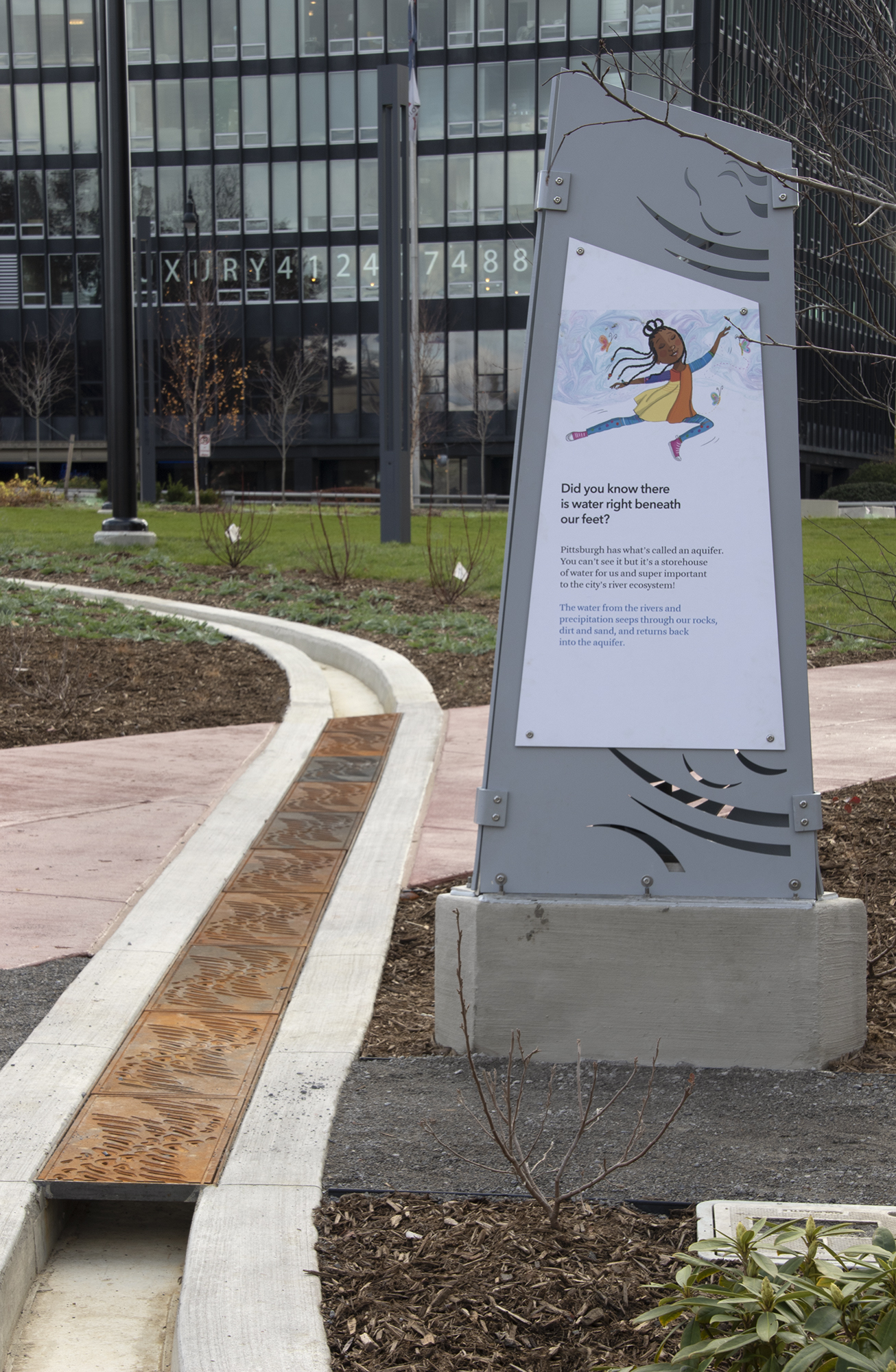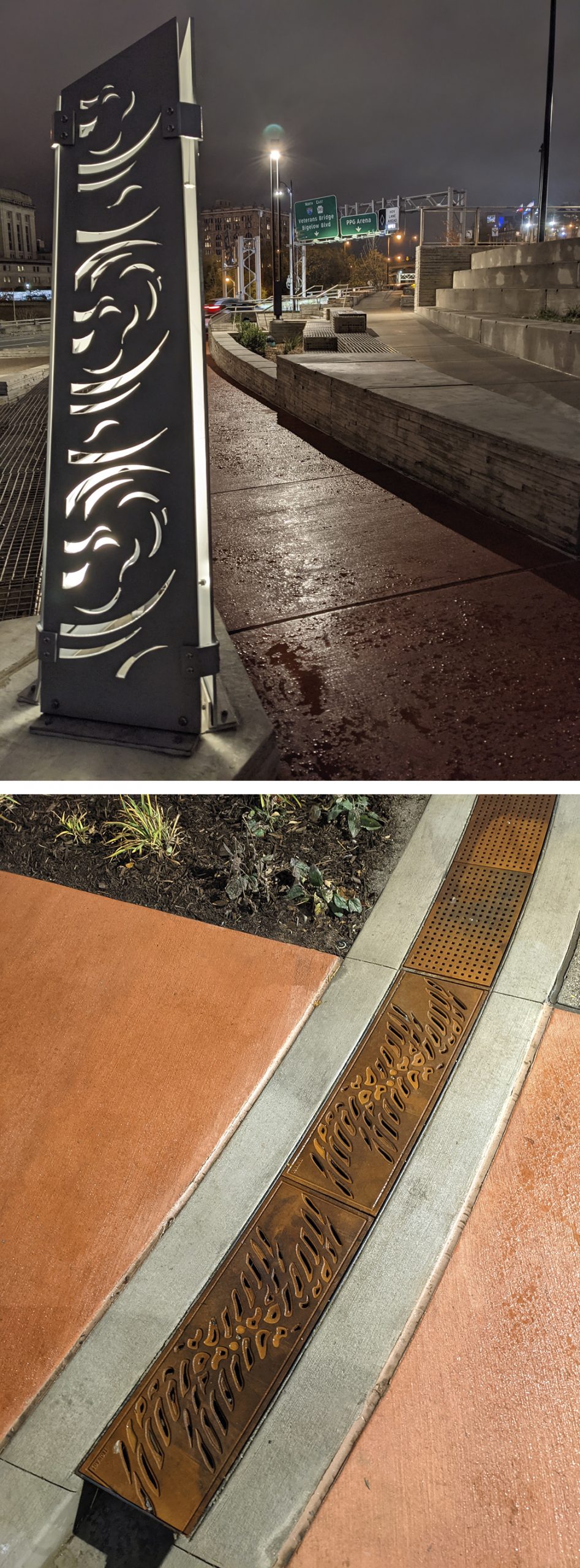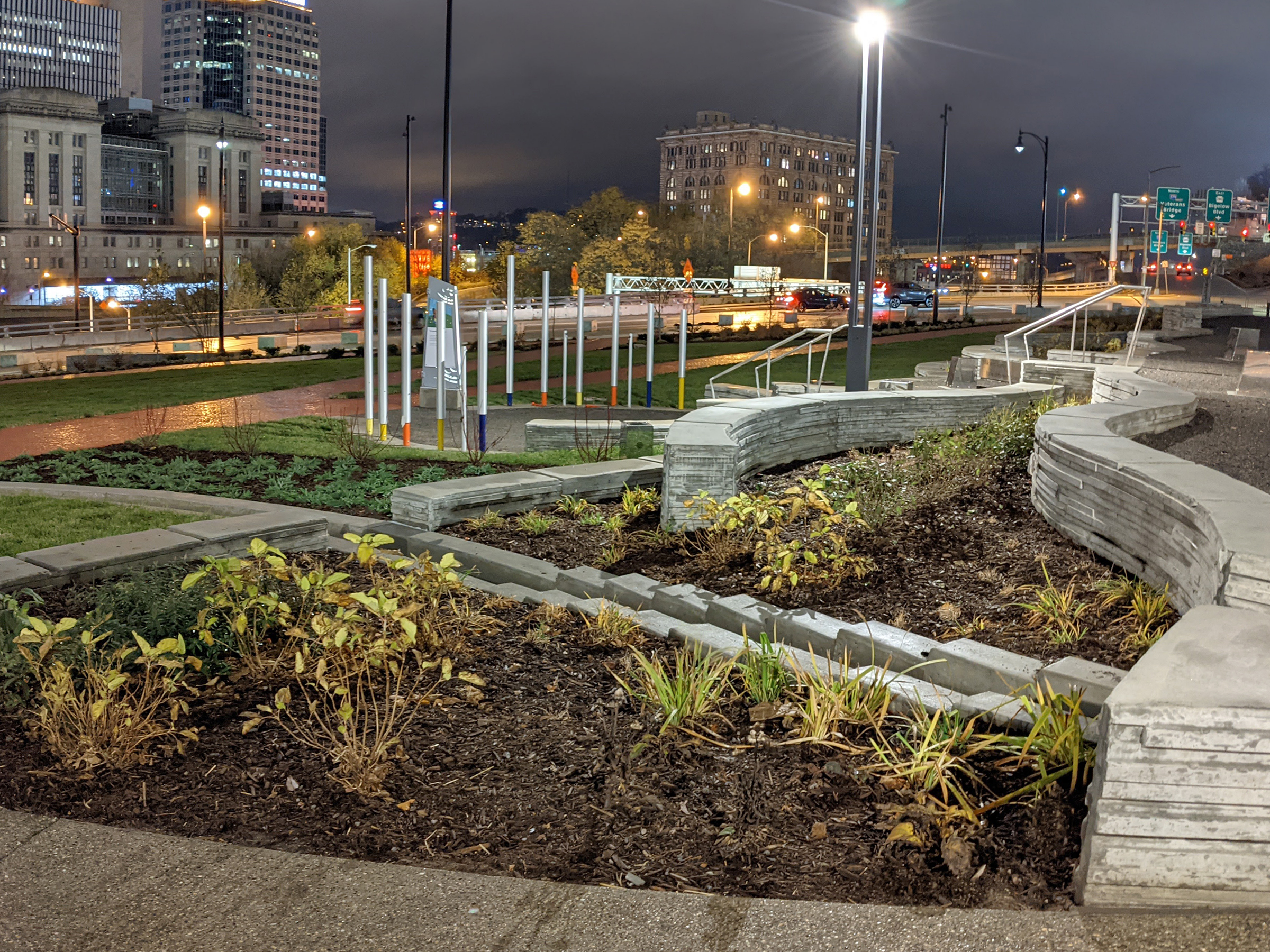





Client: Sports & Exhibition Authority of Pittsburgh, Allegheny County, PA
Location: Pittsburgh, PA, United States
Completion date: 2021
Artwork budget: $2,500,000
Project Team
Founding Partner
Fred Bonci
LaQuatra Bonci Associates
Senior Associate, Project Manager
Dan McDowell
LaQuatra Bonci Associates
Coordinating Artist, Contributing Artist (Rivers & Veins)
Jann Rosen-Queralt
Jann Rosen-Queralt, LLC
Urban Designer, developed steel totems with tables and night lighting
Lakeisha Byrd
Communion, LLC
Scholar who researched and wrote "story wall", honoring two legendary Hill Residents, collaborated with artist Vanessa-Brantley Newton to create Keisha, the park guide.
Dr. Kimberly Ellis
Children's Garden
Amir Rashidd
Director for the Office of Public Art
Sallyann Kluz
Pittsburgh Office of Public Art
Overview
This park rights a wrong the city of Pittsburgh inflicted on the historically Black Hill District Neighborhood. Wounded by failed urban renewal the I-579 freeway was built and effectively cut the area off. The CAP project reconnects the Hill District to downtown, while the design theme of the park pays tribute to elements of the rich African American history of Pittsburgh including poetry, journalism and the Underground Railroad through inclusion of works by local artists and historians. The park includes a rain garden, spiral storm water system and open space enhancements I designed in collaboration with La Quatra Bonci Associates. Named for a long-time Hill District activist, this 3-acre “urban connector park” features bike paths, pedestrian walkways and community gathering spaces such as an outdoor classroom and gardens with embedded benches. With sustainability in mind, I have created Rivers and Veins, an intricate artwork that captures storm water, which weaves throughout the site and terraces in a raingarden that interprets area geology and celebrates the importance of water to the history of Pittsburgh integrating culturally relevant themes. Materials used throughout the park are concrete, steel, pavers, plant materials, rocks, water.
Goals
Early design integration of the public artwork was crucial. While the park was the effort of landscape architects, engineers, fabricators and a handful of artists, design integration of the artwork was essential to allowing the artists to engage with and contribute to the narrative of the park. Drawing from the design theme and project goal of re-unifying the previously disconnected neighborhood, artwork and elements consistently and deeply engage with historical and cultural signifiers meaningful to the city at large and to the Hill District Neighborhood specifically.
Process
This project highlighted collaboration as an important element and just about every aspect of the design plan was developed through community review meetings with residents of the Hill District and stakeholders to gather input and inspiration while assuring that collective desires were met. My role was the Design Team Coordinating Artist and I was a liaison with the landscape architecture firm, LaQuatra Bonci Associates as well as the other artists on the project. I worked to communicate, delegate, and mentor others as we worked toward the goal of a well-rounded design theme with intricate individual works interwoven throughout the park. Some individual elements that were designed were Rivers and Veins, a children’s garden, and a story wall paying homage to two neighborhood activists. The entire team worked to identify key amenities for the park, for example the Sankofa Bird walkway was the result of a creative group session.
Additional Information
When developing a public art project, I begin with researching history and ecology in order to ground the work within the local site and context. This has resulted in attaining shared goals and meaningful placemaking. For example, for Frankie Mae Pace Park, I designed trench drains related to cultural elements of the city of Pittsburgh to recognize and honor social injustices of the past, as well as a rain garden and benches with steel-embossed prints of my images blending poetry, the city’s legacy of the underground railroad, historical maps and my own artistic vision.